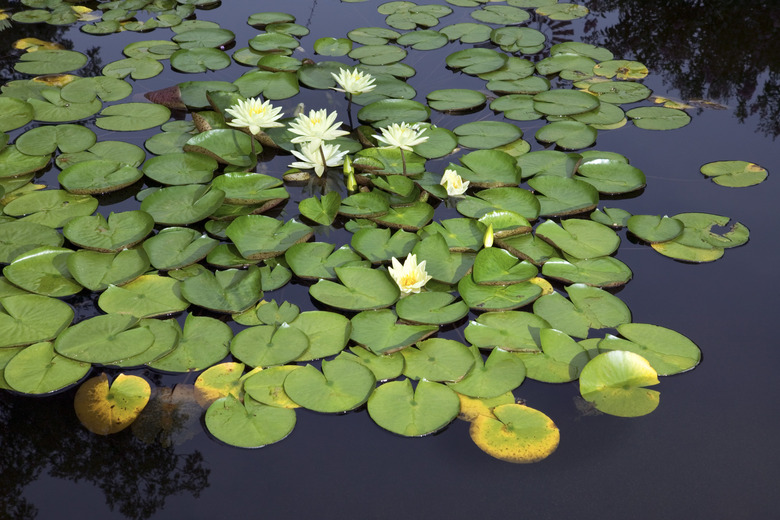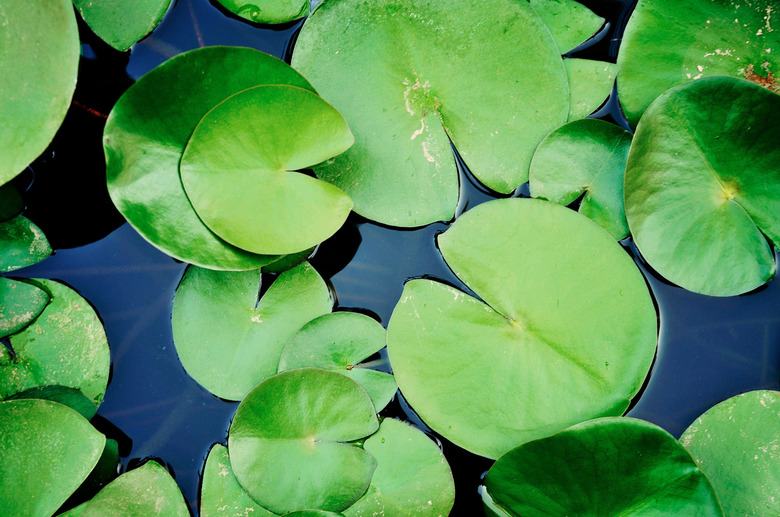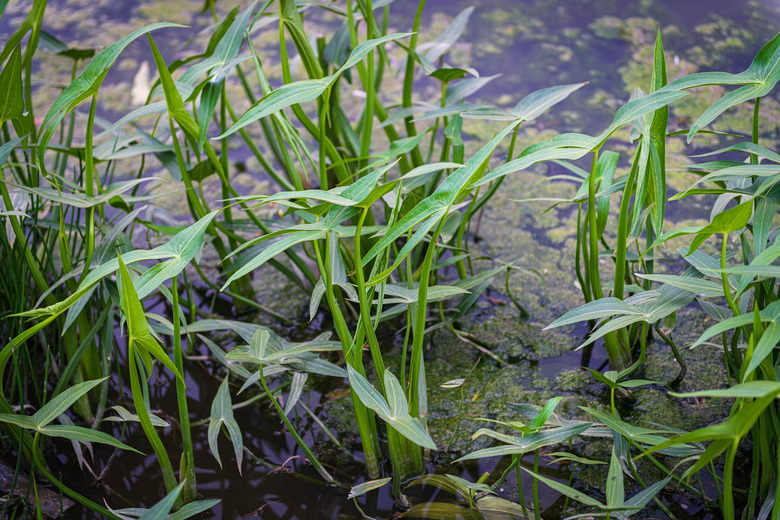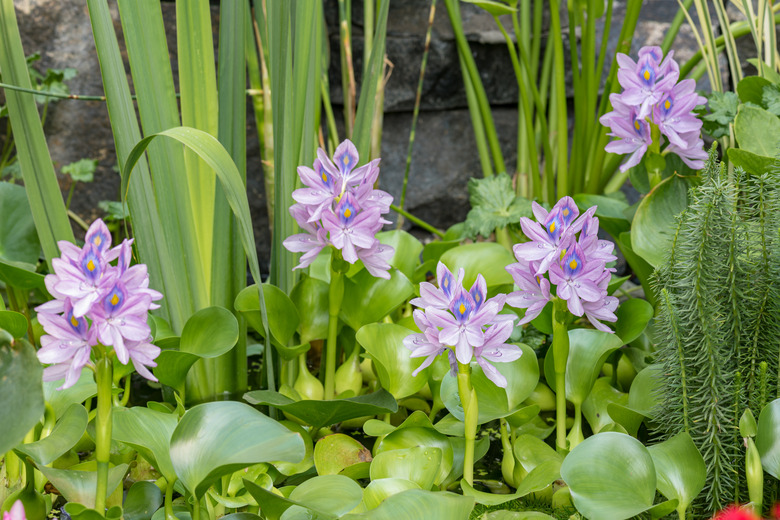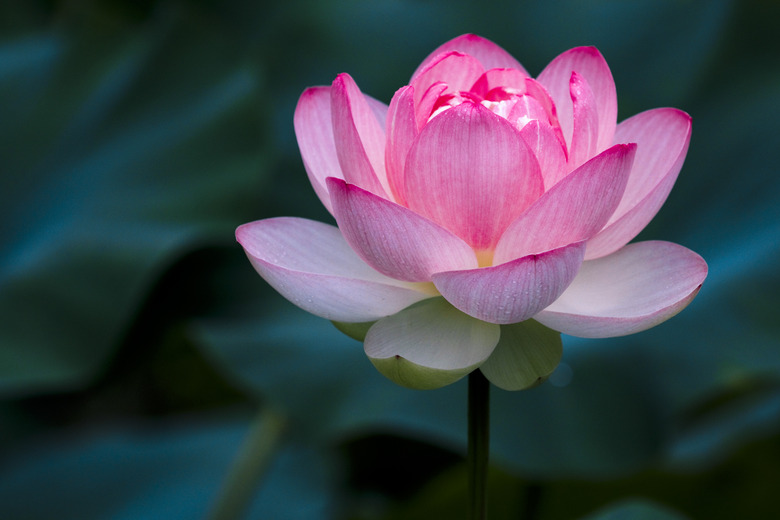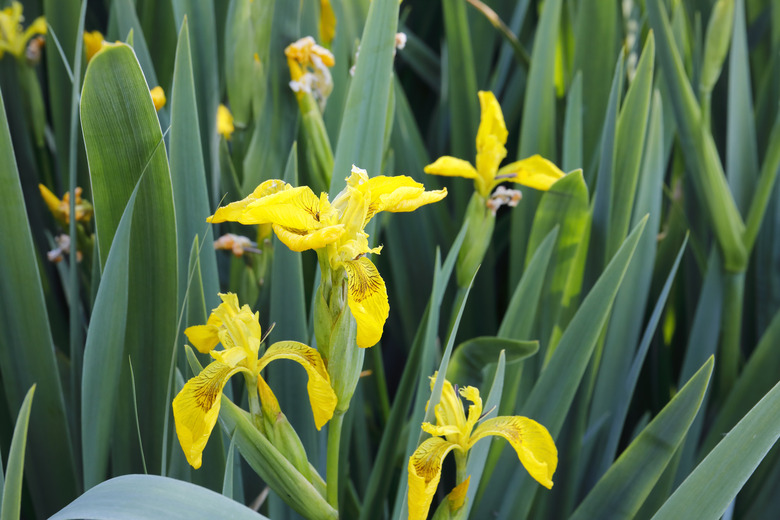5 Water Plants To Complete Your Water Garden
We may receive a commission on purchases made from links.
Aquatic plants complete a landscape pond or water feature. They add color while softening the lines between the yard and the pond. Many plants also help inhibit algae growth as their leaves shade the water so algae can't grow and bloom. There are aquatic plants available that thrive along the shore as well as in the deeper sections of the water.
1. Water Lily Plants
1. Water Lily Plants
Water lilies (Nymphaeaceae) produce white flowers and have large floating leaves that shade out the water in the pond. Some varieties bloom in other colors such as yellow. There are hardy versions that can overwinter in deep ponds and tropical varieties that must be brought indoors as they can't tolerate winter temperatures. They can be planted up to two feet deep in the water. Plant them in pond baskets or pots to prevent the water lilies from overgrowing in the pond.
2. Sagittaria or Arrowhead Plants
2. Sagittaria or Arrowhead Plants
The Sagittaria genus of aquatic plants includes the common or broad-leafed arrowhead (Sagittaria latifolia). It grows beneath the water in shallow areas near the edges of ponds and water features. A grass-like plant, it emerges about 3 feet above the water surface with green blades and produces small white flowers. This aquatic plant is suitable for softening the line between a pond and the surrounding landscaping, and it also provides cover for fish.
3. Water Hyacinth Plants
3. Water Hyacinth Plants
This perennial plant produces light blue or violet blooms along a flower stalk that may reach up to 3 feet in length. Its root system floats beneath the water surface, and its dark green stems and leaves emerge above the water level. While striking in appearance, water hyacinth (Eichhornia crassipes) is restricted in some states and regions as a pest, so you must check that it is legal in your area before planting.
4. Lotus Plants
4. Lotus Plants
Prized for its striking large-petaled flowers, lotus (Nelumbo nucifera) thrives in water up to 10 inches deep. It can be planted in deeper sections of the pond by planting it in a pot and setting the pot on top of a rock submerged in the water. A lotus plant produces large floating leaves like lilies do, but the leaves are thin and block out little sunlight. Lotus is especially well-suited to ponds in shaded areas that need some color.
5. Flag Iris Plants
5. Flag Iris Plants
Blue flag iris (Iris versicolor) and yellow flag iris (Iris pseudacorus) have the typical drooping iris flowers but can grow in marshy and wet areas, including wet mud along the shore or in up to 10 inches of water. They reach up to 3 feet tall with long, sword-like green leaves. They produce one or more blooms on each flower stalk. They do best in the shallow areas of ponds and water features or in the soil along the bank of the pond.
